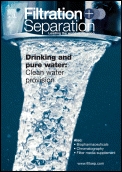
Filtration + Separation
Scope & Guideline
Exploring Cutting-Edge Technologies in Separation Processes
Introduction
Aims and Scopes
- Innovative Filtration Technologies:
The journal emphasizes new developments in filtration technologies, including advancements in materials such as activated carbon, nonwoven fabrics, and membrane technologies that improve filtration performance. - Environmental Sustainability:
A core focus is on sustainable practices in filtration, including the reduction of waste, energy efficiency, and the use of eco-friendly materials to address modern environmental challenges. - Industrial Applications:
The journal covers a wide range of industrial applications of filtration and separation technologies, including water treatment, air filtration, and processes in the chemical and food industries. - Testing and Evaluation Methods:
Research on methodologies for testing and evaluating the performance of various filtration systems is a consistent theme, providing insights into standards and best practices. - Collaborative Research and Innovation:
The journal promotes collaborative efforts within the filtration community, featuring interviews and discussions with industry leaders to foster innovation and share knowledge.
Trending and Emerging
- Advanced Air Filtration Technologies:
There is a growing emphasis on air filtration systems, particularly in light of the increased awareness of air quality issues and health impacts, leading to innovations in filter materials and designs. - Sustainable and Green Filtration Practices:
Research is increasingly focused on sustainable filtration solutions, including the development of biodegradable materials and processes that minimize environmental impact. - Nanofiltration and Membrane Technologies:
Technologies involving nanofiltration and advanced membrane systems are gaining traction, particularly for their applications in water purification and resource recovery. - Smart Filtration Systems:
The integration of smart technologies and Industry 4.0 concepts into filtration systems is becoming a significant theme, emphasizing automation, real-time monitoring, and data analytics. - Filtration for Microplastic Removal:
With rising concerns over microplastics in the environment, there is a marked increase in research focused on filtration technologies specifically designed to address this issue.
Declining or Waning
- Traditional Filtration Methods:
There is a noticeable decrease in publications about conventional filtration methods, as the industry increasingly shifts toward innovative and advanced technologies. - Generalized Water Treatment:
Research on generic water treatment processes appears to be waning, with a more focused approach on specific contaminants and advanced treatment technologies taking precedence. - Single-Use Filtration Solutions:
The trend toward sustainability has led to a decline in interest in single-use filtration products, as researchers and practitioners seek more sustainable, reusable alternatives. - Low-Tech Filtration Solutions:
There is a reduced emphasis on low-tech filtration solutions, as the market demands more sophisticated, high-performance systems that can meet stricter regulatory standards. - Static Filtration Systems:
The focus on static filtration systems is decreasing, as dynamic and automated solutions become more relevant in industrial applications.
Similar Journals
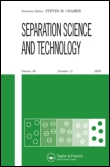
SEPARATION SCIENCE AND TECHNOLOGY
Exploring Breakthroughs in Chemical EngineeringSEPARATION SCIENCE AND TECHNOLOGY is a distinguished journal published by Taylor & Francis Inc, offering critical insights and advancements in the fields of chemistry and chemical engineering. With an ISSN of 0149-6395 and E-ISSN of 1520-5754, the journal spans a rich history from 1978 to 2024, providing a platform for scholarly articles that delve into innovative separation processes and technologies. Notably recognized in the 2023 category quartiles, the journal ranks Q2 in Chemical Engineering and Chemistry, alongside Q3 in Filtration and Separation and Process Chemistry and Technology, reflecting its significant impact and relevance in these research areas. With an impressive Scopus ranking, including a rank of #10/19 in Filtration and Separation, SEPARATION SCIENCE AND TECHNOLOGY is crucial for researchers and professionals seeking to enhance their understanding of separation techniques and applications. Although it operates under a subscription model, its contributions remain indispensable for the advancement of knowledge and technologies in separation science.
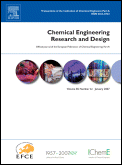
CHEMICAL ENGINEERING RESEARCH & DESIGN
Transforming Ideas into Engineering Masterpieces.CHEMICAL ENGINEERING RESEARCH & DESIGN is a prestigious journal that has been at the forefront of dissemination in the fields of chemical engineering and general chemistry since its inception in 1983. Published by Elsevier, the journal features a rich array of research articles that contribute to both theoretical and practical advancements in the discipline. With an impact factor that positions it strongly within the Q2 quartile for both Chemical Engineering and Chemistry categories, it occupies an esteemed place in the academic community, being ranked #77 out of 273 in Chemical Engineering and #111 out of 408 in General Chemistry on Scopus. Researchers and professionals will find it an invaluable resource for cutting-edge research and innovative methodologies that shape the future of chemical engineering applications. While the journal does not currently offer open access, it remains accessible through institutional subscriptions, ensuring that important findings continue to reach a broad audience. With a scope that is poised to expand through 2024, the journal aims to foster collaboration and knowledge sharing, supporting the continuous evolution of the field.

Separations
Unveiling Breakthroughs in Analytical and Separation TechniquesSeparations is a prestigious open-access journal published by MDPI, dedicated to advancing the fields of analytical chemistry and filtration and separation processes. Established in 2014, the journal has swiftly emerged as a significant platform for disseminating groundbreaking research and innovative methodologies in separation science, boasting an impressive E-ISSN of 2297-8739 and operating out of Basel, Switzerland. With its focus rotating from 2016 through 2024, Separations has been categorized in the Q3 quartile for both analytical chemistry and filtration and separation disciplines as of 2023, demonstrating its relevance in these scientific areas. The journal's rankings in Scopus, with 93rd out of 156 in analytical chemistry and 15th out of 19 in chemical engineering filtration and separation, reflect its commitment to high-quality research accessible to a global audience. Researchers, professionals, and students will find valuable insights and pioneering findings that foster collaboration and innovation within the vibrant community of separation science.
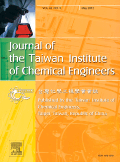
Journal of the Taiwan Institute of Chemical Engineers
Fostering innovation and excellence in chemical research.The Journal of the Taiwan Institute of Chemical Engineers is a prestigious publication in the field of chemical engineering and chemistry, published by Elsevier. With an impressive impact factor placing it in the top quartiles (Q1) of both the Chemical Engineering (miscellaneous) and Chemistry (miscellaneous) categories, this journal serves as a vital platform for disseminating cutting-edge research and innovative findings. Since its inception in 2009 and continuing through 2024, it has established a strong reputation with notable Scopus rankings—ranked 40th out of 273 in General Chemical Engineering and 62nd out of 408 in General Chemistry, reflecting the journal’s significance in its field. By offering open access options, the journal ensures that research is readily available to a global audience, fostering collaboration and knowledge exchange among researchers, professionals, and students. The Journal of the Taiwan Institute of Chemical Engineers is dedicated to advancing the discipline of chemical engineering and supporting the development of novel scientific methodologies and applications.
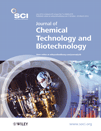
JOURNAL OF CHEMICAL TECHNOLOGY AND BIOTECHNOLOGY
Exploring the Synergy Between Chemistry and BiotechnologyJOURNAL OF CHEMICAL TECHNOLOGY AND BIOTECHNOLOGY, published by WILEY in the United Kingdom, serves as a premier platform for research at the interface of chemical engineering and biotechnology. With an ISSN of 0268-2575 and E-ISSN 1097-4660, this journal has established itself as a crucial resource for scholars and professionals, evidenced by its impactful categorization in the Q1 and Q2 quartiles across multiple domains such as Inorganic Chemistry, Biotechnology, and Renewable Energy. The journal encompasses a broad scope that includes innovative research on sustainable technologies, pollution management, and advances in chemical syntheses, making it essential for those pursuing cutting-edge developments in these disciplines. Researchers and practitioners benefit from its comprehensive coverage, as it includes insightful articles, reviews, and case studies that collectively push the boundaries of contemporary science and engineering. With a ranking of Q2 in its various categories and significant percentiles in key fields, the journal stands as a beacon for high-quality scholarship, eligible for impact in both academia and industry.

CHEMICAL AND PETROLEUM ENGINEERING
Connecting Scholars in Chemical and Petroleum EngineeringChemical and Petroleum Engineering is a prestigious academic journal dedicated to the advancement of knowledge in the fields of chemical engineering and petroleum technologies. Published by Springer, this journal serves as a vital resource for researchers, professionals, and students interested in the intricate processes and innovations that drive these industries. With an ISSN of 0009-2355 and an E-ISSN of 1573-8329, it has established a notable presence since its inception in 1965. Throughout its converged years, the journal has continually published impactful research that contributes to sustainability and efficiency within the sectors. Although it holds a Q3 ranking in Chemical Engineering and Fuel Technology and a Q4 ranking in Energy Engineering and Geochemistry, it is a noteworthy platform for emerging studies, fostering connections among scholars. Readers will find a wealth of information and ideas, but please note that this journal does not currently offer open access options. For those passionate about chemical and petroleum engineering, this journal is an essential part of staying informed and engaged with the latest scientific advancements.

Journal of Industrial and Engineering Chemistry
Elevating Knowledge in Chemical Engineering PracticesThe Journal of Industrial and Engineering Chemistry, published by Elsevier Science Inc, stands as a premier platform since its inception in 1996, dedicated to the dissemination of innovative research in the field of Chemical Engineering. Located in South Korea, this influential journal has established itself with an impressive impact factor and is categorized in the Q1 quartile for chemical engineering (miscellaneous), ranking in the top 12% of its category according to Scopus. With a focus on cutting-edge industrial applications, the journal covers a diverse range of topics including chemical processes, engineering innovations, and sustainable practices, appealing to a broad spectrum of researchers, professionals, and students. Although currently not open access, the journal offers a wealth of resources for advancing knowledge and driving forward the chemical engineering discipline. The converged years from 1996 to 2024 reflect its ongoing commitment to excellence and timeliness in publishing high-quality research.

SEPARATION AND PURIFICATION TECHNOLOGY
Advancing the frontiers of separation science.SEPARATION AND PURIFICATION TECHNOLOGY is a leading multidisciplinary journal published by Elsevier, focused on advancing the fields of Analytical Chemistry and Filtration and Separation. With its ISSN 1383-5866 and E-ISSN 1873-3794, this prestigious journal has achieved remarkable recognition, ranking in the top quartile (Q1) in both its categories, reflecting its substantial impact and relevance in the scientific community. Operating from its headquarters in Amsterdam, Netherlands, SEPARATION AND PURIFICATION TECHNOLOGY serves as a vital platform for researchers, professionals, and students to disseminate innovative findings and methodologies related to separation processes and purification techniques. The journal not only promotes open access research but also maintains a rigorous peer-review process to ensure high-quality publications. With a convergence period spanning from 1997 to 2025, it highlights the ongoing evolution and importance of separation technology in various applications, establishing it as an essential resource for those interested in cutting-edge advancements in analytical and chemical engineering domains.
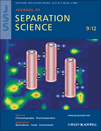
JOURNAL OF SEPARATION SCIENCE
Advancing the Frontiers of Separation ScienceJOURNAL OF SEPARATION SCIENCE, published by WILEY-V C H VERLAG GMBH in Germany, is a premier platform dedicated to the advancement of knowledge in the fields of analytical chemistry and filtration and separation technologies. With an impact factor that reflects its strong influence—ranking #42 in Analytical Chemistry and #8 in Filtration and Separation—the journal strives to disseminate high-quality research findings from both academia and industry. The journal has established a significant readership, evidenced by its Scopus rankings, and is indexed under ISSN 1615-9306 and E-ISSN 1615-9314. As part of its commitment to accessibility, the journal provides open access options, enabling broader dissemination of innovative research. Since its convergence in 2000 and continuing through 2024, JOURNAL OF SEPARATION SCIENCE has become essential for researchers, professionals, and students aiming to stay at the forefront of separation science methodologies and applications, thereby actively influencing advancements in both theoretical knowledge and practical implementations.

PARTICULATE SCIENCE AND TECHNOLOGY
Unveiling the Potential of Particulate TechnologiesParticulate Science and Technology is a distinguished journal published by Taylor & Francis Inc, dedicated to advancing the understanding and application of particulate materials across various scientific fields. Serving the international community since 1983, this journal features original research, reviews, and technical notes that address key developments in chemical engineering, particularly focusing on the generation, processing, and application of particulate matter. With an impact factor that reflects its significant contributions within the discipline (Ranked Q2 in Chemical Engineering), the journal provides a vital platform for researchers, professionals, and students seeking to enhance their knowledge and influence in the field. While not currently open access, Particulate Science and Technology is committed to disseminating high-quality research that stimulates innovation and fosters collaboration amongst experts worldwide. For those invested in the advancement of chemical engineering principles, this journal is an invaluable resource.